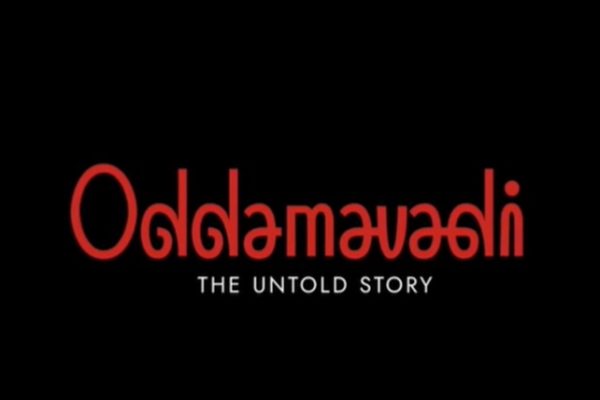UNITED NATIONS, Mar 8, 2011 (IPS) – When Muammar el-Gaddafi went on an arms-buying spree in the 1970s and 80s – stockpiling a staggering array of sophisticated weapons systems both from the East and West – the United States warned that Libya was in danger of becoming one of the world's most "overarmed" countries.
If military forces from the United States and the North Atlantic Treaty Organisation (NATO) decide to enforce a "no- fly" zone over Libya, the Europeans are likely to confront some of their own weapons systems, which may come back to haunt them.
Besides Soviet-made Sukhoi Su-24, Tupolev Tu-22 and MiG-25 fighter bombers, Libya is also armed with French-made Mirages, Dassault Falcon trainers and Aerospatiale helicopters.
The Italians supplied Libya with over 120 SIAI-Marchetti trainers, the French with Crotale surface-to-air missiles, the United States with Lockheed C-130 transport aircraft and the British with Centurion battle tanks and Saladin and Ferret armored personnel carriers.
The weapons from Europe also include assault rifles from Belgium, howitzers from Sweden and the Artemis anti-aircraft air defence system from Greece.
Armed with rising oil revenues, the Libyan leader built a massive military arsenal that also included weapons from a non-conventional source: Brazil.
The Brazilians provided over a 1,000 Cascavel and Urutu fighting vehicles and armored personnel carriers delivered in the early 1980s (and which could be used against civilian demonstrators).
Pieter Wezeman, senior researcher, Arms Transfers Programme at the Stockholm International Peace Research Institute (SIPRI), told IPS Libya is still largely dependent on the major weapons arsenals it built in the 1970s and 1980s.
"Many of these were probably stored because Gaddafi did not have the personnel to operate them," he said.
It is very questionable how many of the weapons are still serviceable and operational after about 12 years of arms embargoes, imposed by the United States and Western Europe in the mid-1980s.
"For sure they are no longer up to date and no match for a well organised U.S. or NATO air campaign," Wezeman added.
Still, an overwhelming proportion of Libya's weapons came from the former Soviet Union and later its successor state, Russia, according to defence analysts.
At the 25th anniversary celebrations of the military coup that brought Gaddafi to power, over 1,000 Soviet-made T-62 and T-72 battle tanks were on public display during the September 1994 parade in the streets of Tripoli.
Last week, Sergei Chemezov, director of a Russian arms exporting company, was quoted as saying that Russia stands to lose over four billion dollars in arms contracts with Libya.
But he admitted that Russia has not sold any shoulder-fired anti-aircraft weapons – that could be used against Western aircraft – to Libya since 1992.
According to European Union (EU) statistics quoted by the New York Times last week, Italy has been the EU's largest arms exporter to Libya, while Libyan investors are said to have a two percent stake in the Italian aerospace and defence company Finmeccanica.
Meanwhile, the United States had earmarked 330,000 dollars to train Libyan soldiers and military personnel under the International Military Education and Training (IMET) programme in 2010, increasing to 350,000 dollars in 2011.
But the U.S. foreign assistance programme in Libya was "focused on bolstering Libya's commitments to renouncing weapons of mass destruction (WMD), combatting the rapidly growing terrorist threat posed by al-Qaeda in the region, and promoting professional and effective law enforcement and military services that respect international norms and practices," according to the State Department.
Wezeman told IPS that Libya has been interested in buying new major weapons systems since the U.N. and EU arms embargoes were lifted in 2003-2004.
But despite all kinds of unconfirmed reports that major deals had been signed, there is no reason to believe that any new major arms have been delivered since 2004, save for some Milan anti-tank missiles from France.
He said arms producers, with high level support from their national governments, in the UK, France, Italy and Russia have all been marketing their products aggressively in Libya in recent years.
"The will to sell was there, but Gaddafi seems to have been careful with signing contracts," he noted.
Wezeman also said that some of these existing weapons are known to have been refurbished or upgraded in recent years.
A UK-based company, GDUK, provided a communication system for use in T-72 tanks and the French company Dassault refurbished several, possibly up to 12, Mirage F-1 combat aircraft, two of which were probably the ones which defected to Malta a week ago.
Italian Finmeccanica has been refurbishing CH-47 transport helicopters and was contracted to refurbish Palmaria heavy artillery.
Wezeman also said Libya did invest in border protection projects, buying surveillance equipment and surveillance aircraft worth hundreds of millions of Euros from Finmeccanica in the past few years.
Libya has also tried to obtain large numbers of rifles, he said.
Ukraine reported in 2006-2007 that it exported 101,500 rifles to Libya and a Russian company reportedly received a contract for the delivery of 500,000 rifles.
A Belgian company sold a small batch of high-tech rifles to Libya some years ago and an Italian company delivered a batch of high-tech police rifles a year ago, said Wezeman.
"There is reason [to believe] that even more has been delivered from other sources. These new weapons come on top of the large arsenal Libya had built up in the 1970-80s and which can still be used," Wezeman declared.
He also predicted that a U.S./NATO air strike on Libya would, without much doubt, quickly destroy its major weapons: very similar to what happened in the case of Iraq in 1990 and 2003.
"However, any ground operations could run into the same troubles as in the case of Iraq. With the enormous amount of small arms and light weapons around it will be easy for anyone who wants to fight to obtain the weapons needed," Wezeman added.
Post Disclaimer | Support Us
Support Us
The sailanmuslim.com web site entirely supported by individual donors and well wishers. If you regularly visit this site and wish to show your appreciation, or if you wish to see further development of sailanmuslim.com, please donate us
IMPORTANT : All content hosted on sailanmuslim.com is solely for non-commercial purposes and with the permission of original copyright holders. Any other use of the hosted content, such as for financial gain, requires express approval from the copyright owners.
 Sri lanka Muslims Web Portal Sri Lanka Muslims News Center
Sri lanka Muslims Web Portal Sri Lanka Muslims News Center



